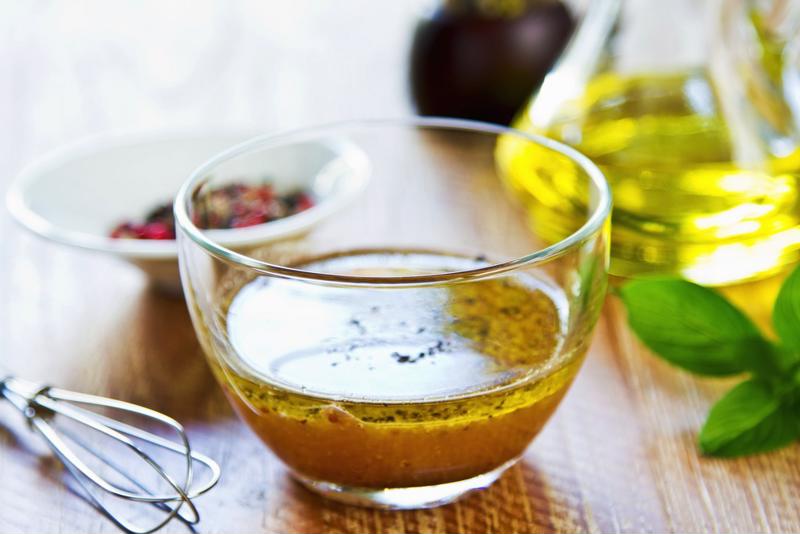The versatile vinaigrette is not only a salad dressing, but also a marinade and cold sauce. With so many variations on the classic and basic recipe of oil, vinegar and seasonings available, students at cooking schools in Colorado should consider adding a few novel ingredients and techniques to their repertoires. Consider these approaches to making a great vinaigrette:
A classic base
A great place to start with vinaigrette is a versatile basic recipe. Good Eats offers exactly that, a seven-ingredient approach that can be altered to your tastes. Simply combine a small minced shallot, a small minced clove of garlic, two teaspoons of Dijon mustard, three tablespoons of white wine vinegar, one tablespoon of water, three-quarters of a cup of olive oil and salt and pepper.
You can either whisk everything together except the olive oil and slowly add it in as you stir, or shake all the ingredients together in a tightly sealed jar. This recipe utilizes two essential elements of handmade vinaigrettes to achieve a strong final result: A 3-to-1 proportion of oil to vinegar and the use of mustard to aid emulsification.
Want to mix things up a little? These additional ingredients may be just what you need.
 A vinaigrette is an adaptable dressing with a variable flavor profile.
A vinaigrette is an adaptable dressing with a variable flavor profile.Lemon
A lemony zing and a little bit of sugar make a vinaigrette that has an extra pop. This version from Epicurious is both simple and effective. Mix one-half teaspoon of finely grated fresh lemon zest, two tablespoons of fresh lemon juice, one teaspoon of sugar and one-half teaspoon of Dijon mustard.
As you whisk, steadily add three to four tablespoons of olive oil, to your preference. You can then use the salt and pepper to add the finishing touches. The additional sugar means it pairs better with salads containing fruit, but it can also be used with a variety of leafy greens. It can also be used as a dip for vegetables and some types of seafood, like lump crab meat.
Maple
To make this dressing, whisk two tablespoons of extra-virgin olive oil, one tablespoon of cider vinegar, two teaspoons of pure maple syrup, one and one-half tablespoons of Dijon mustard until well-blended. Then, season with salt and pepper to taste.Martha Stewart’s maple vinaigrette recipe is a wonderful dressing for a fall-inspired salad. Stewart’s salad includes blue cheese, apples, celery and a mix of greens. However, the dressing has a variety of applications culinary students can explore.
A Caesar alternative
Instead of classic Caesar salad dressing, this alternative from Bon Appetit draws on that often-creamier dressing’s flavors to produce a delectable final product. Juicing two lemons with peel and pith removed, then mixing in your desired amount of finely chopped anchovies, one-half cup of olive oil, a quarter-teaspoon of red pepper and salt and pepper to taste leads to a great Caesar accompaniment.
You should also consider using these variations on the vinaigrette theme as marinades and dips alongside their traditional function as salad dressings. Whether you’re already attending one of the best culinary schools in Colorado or looking to start, you can adapt these recipes throughout your educational and professional path.


